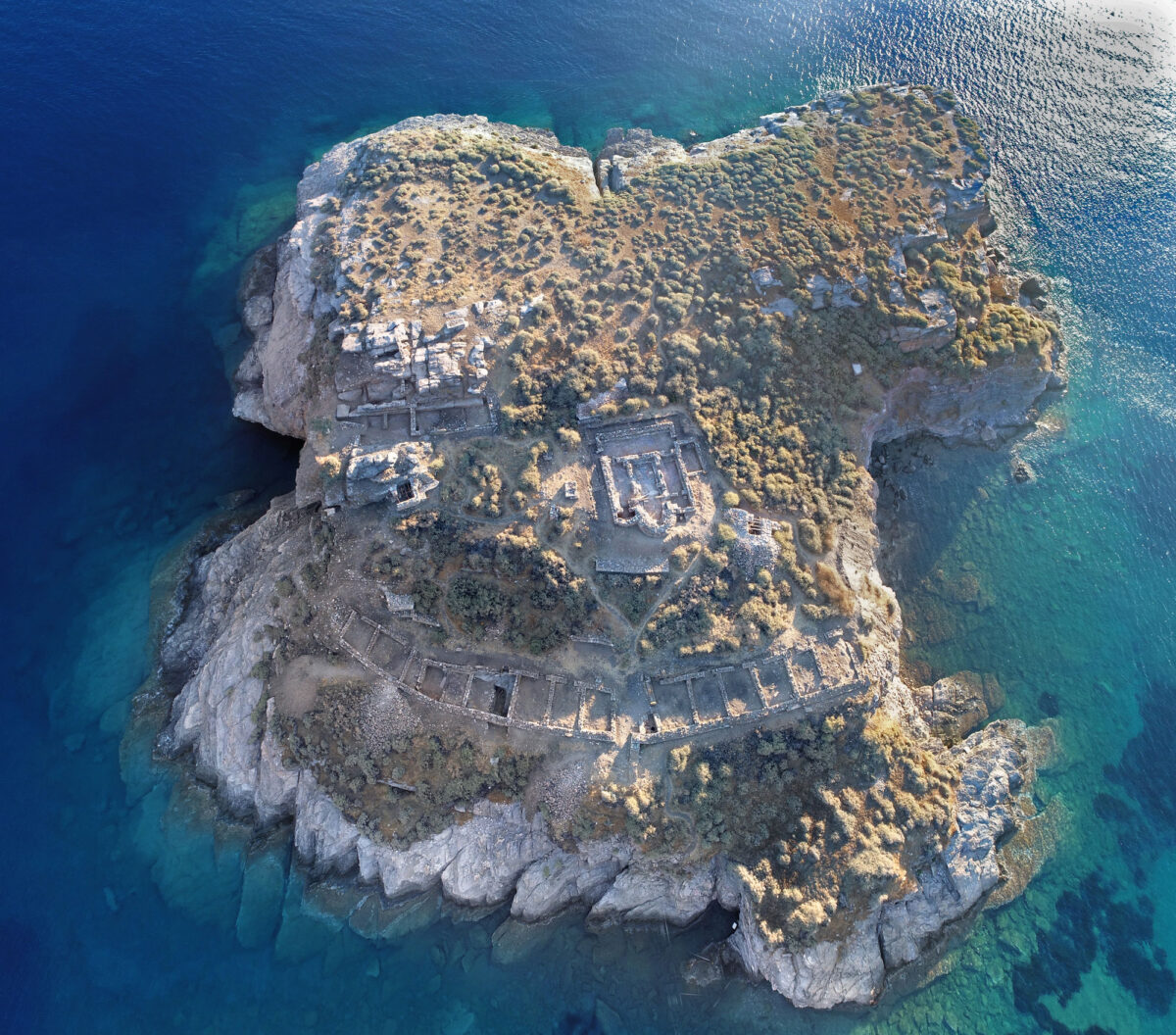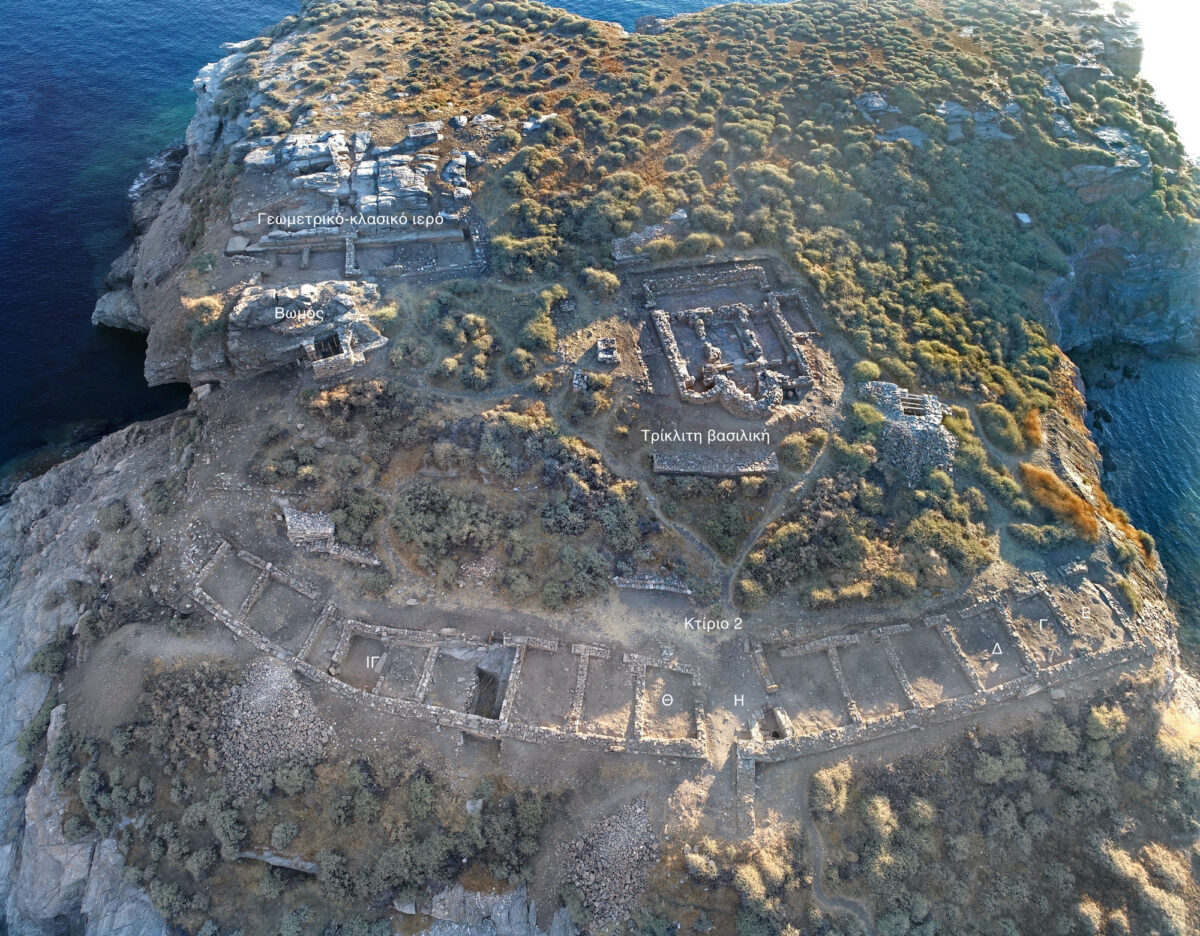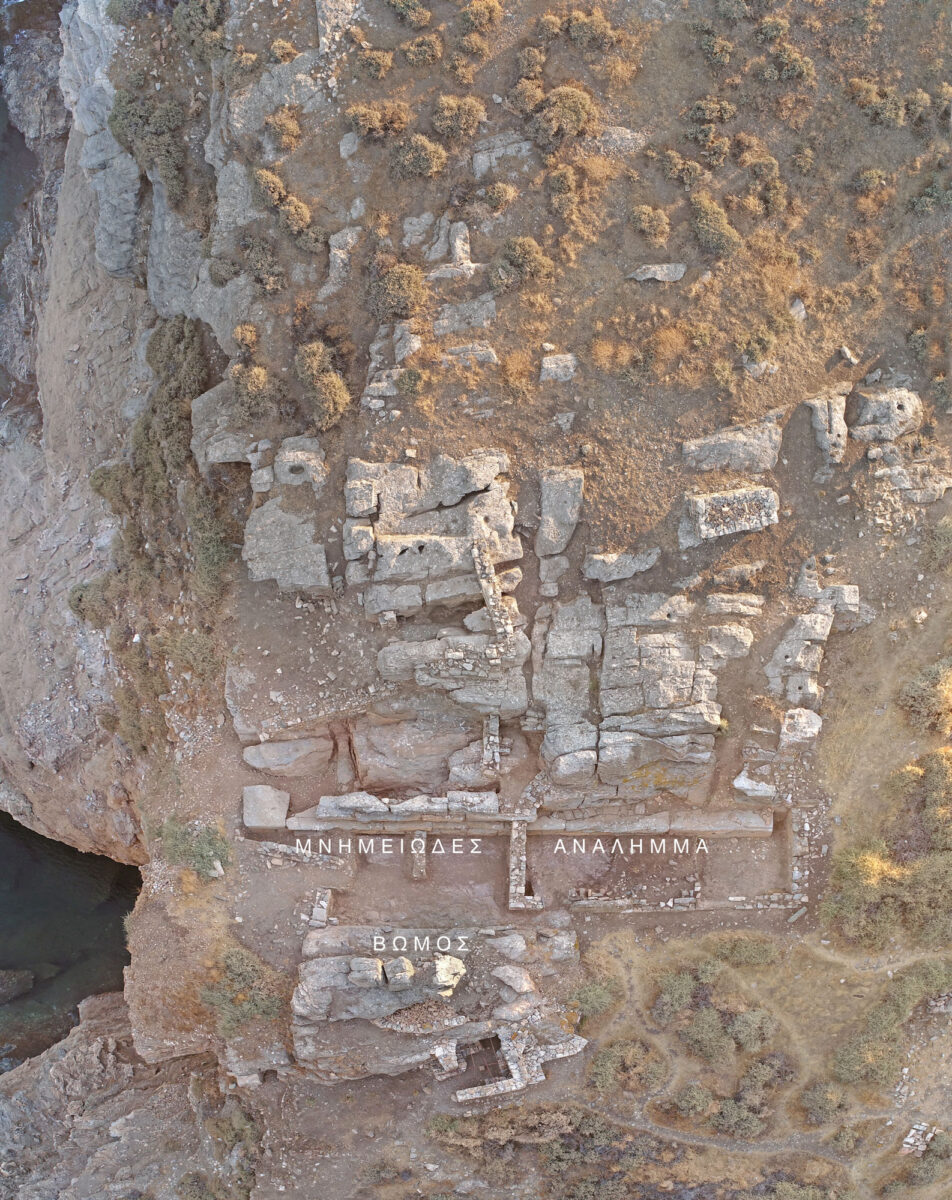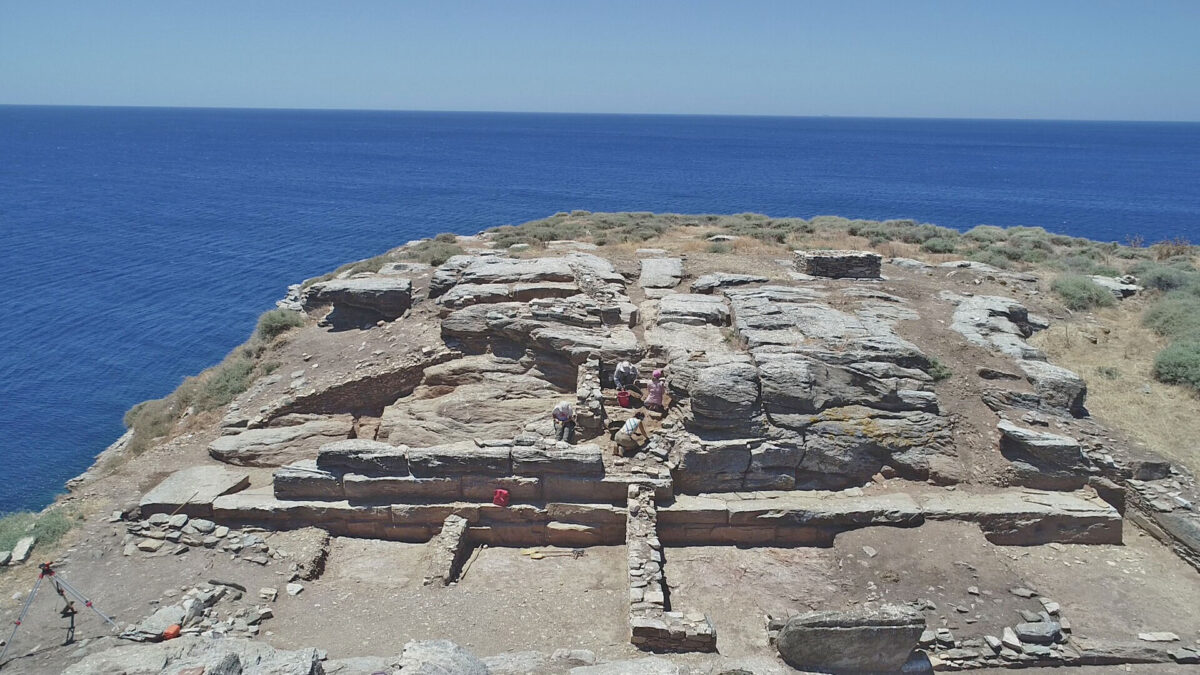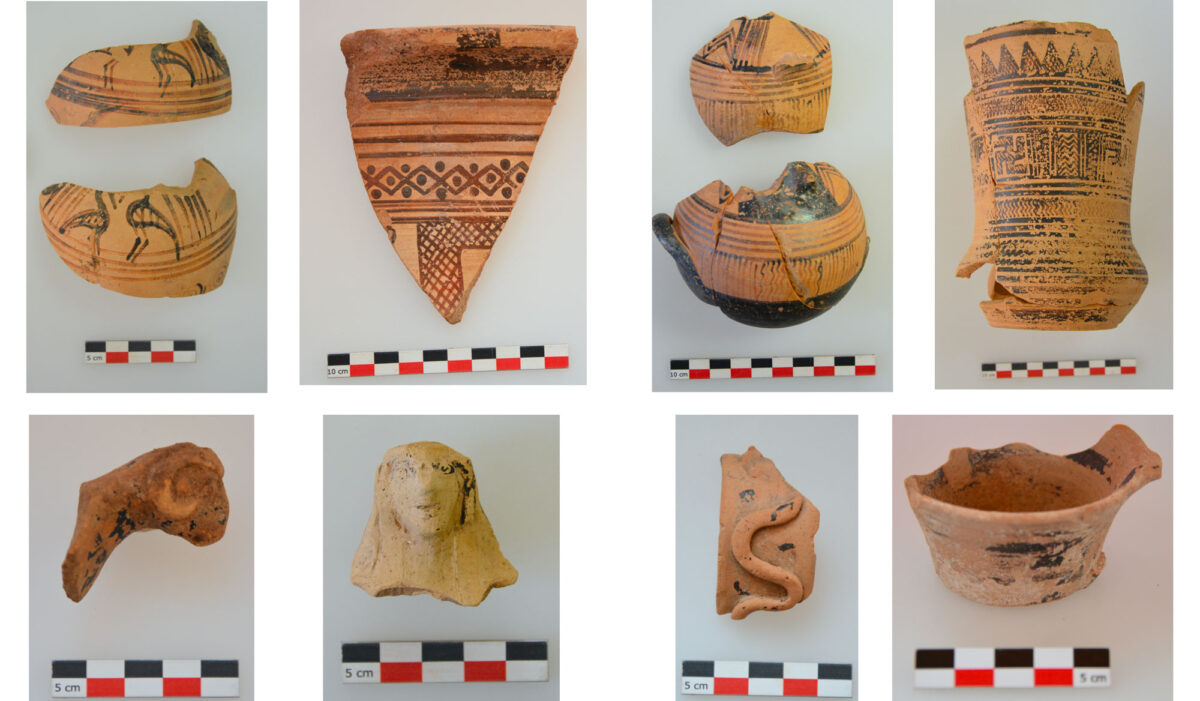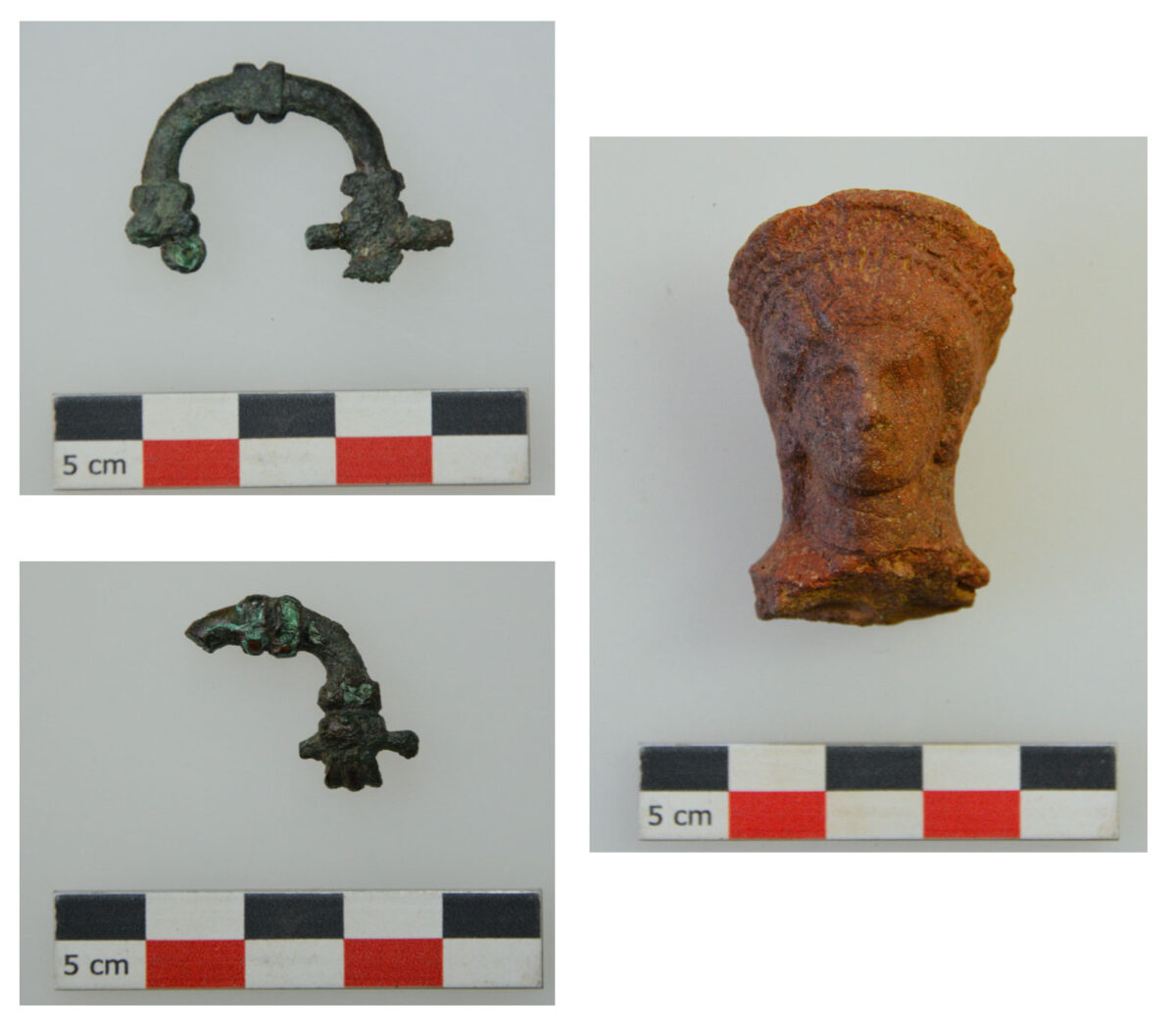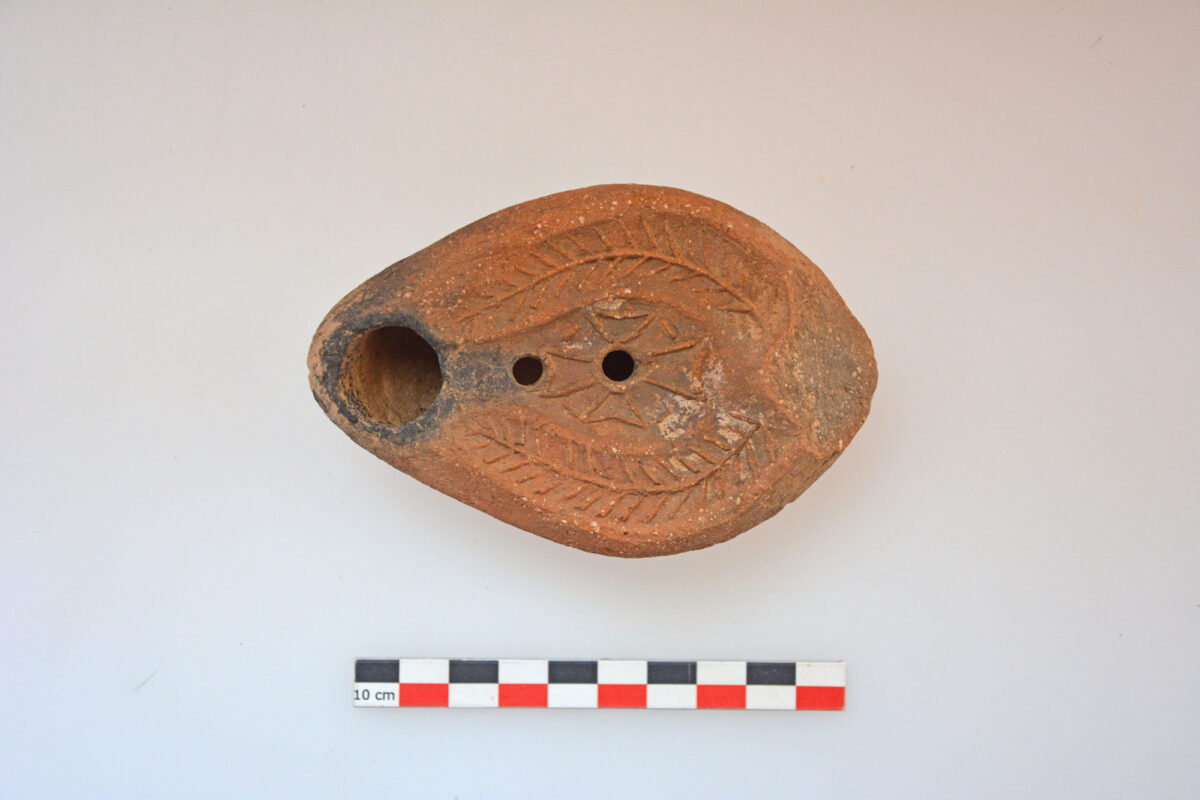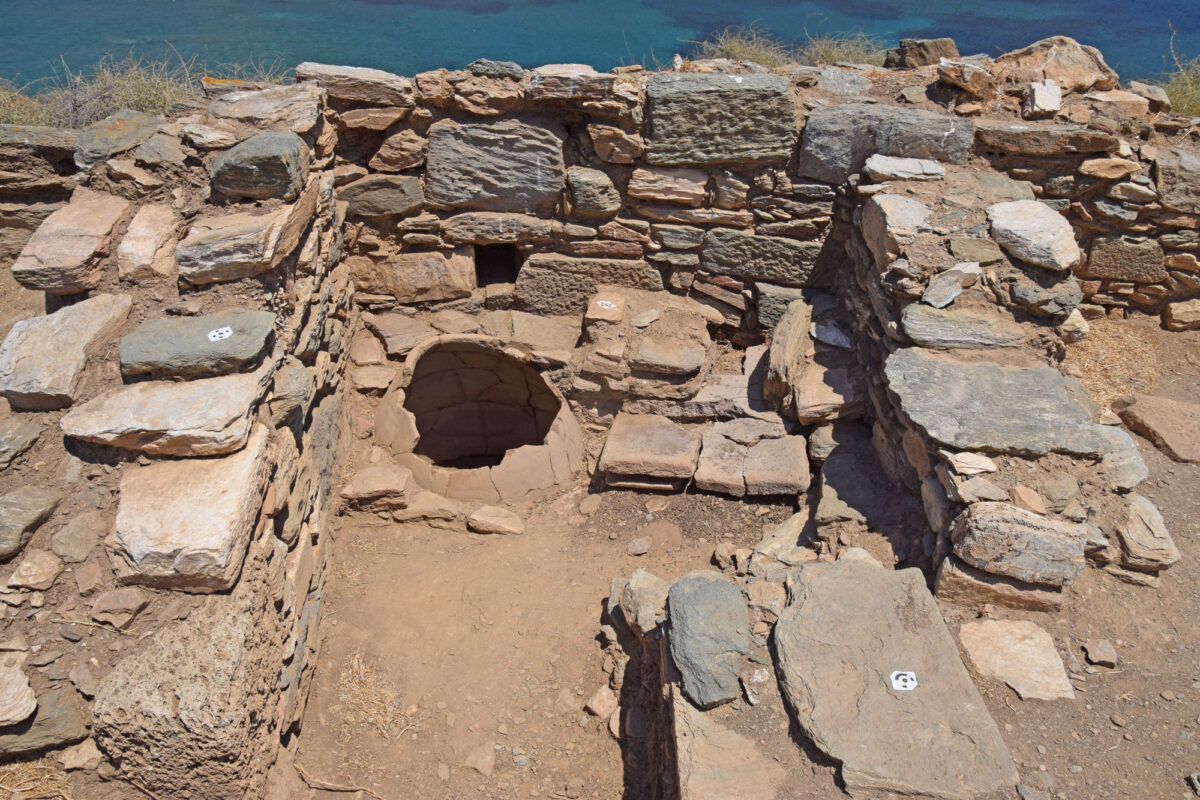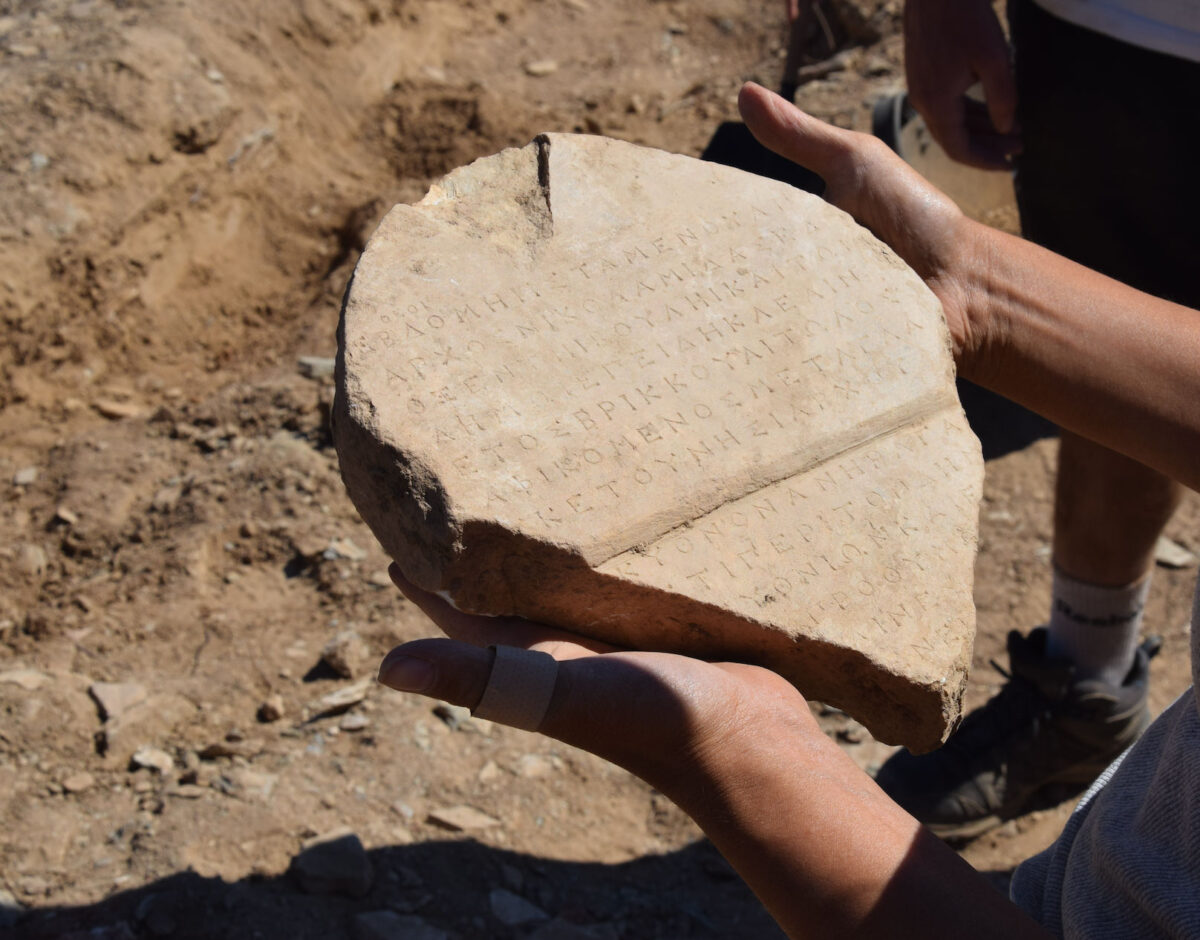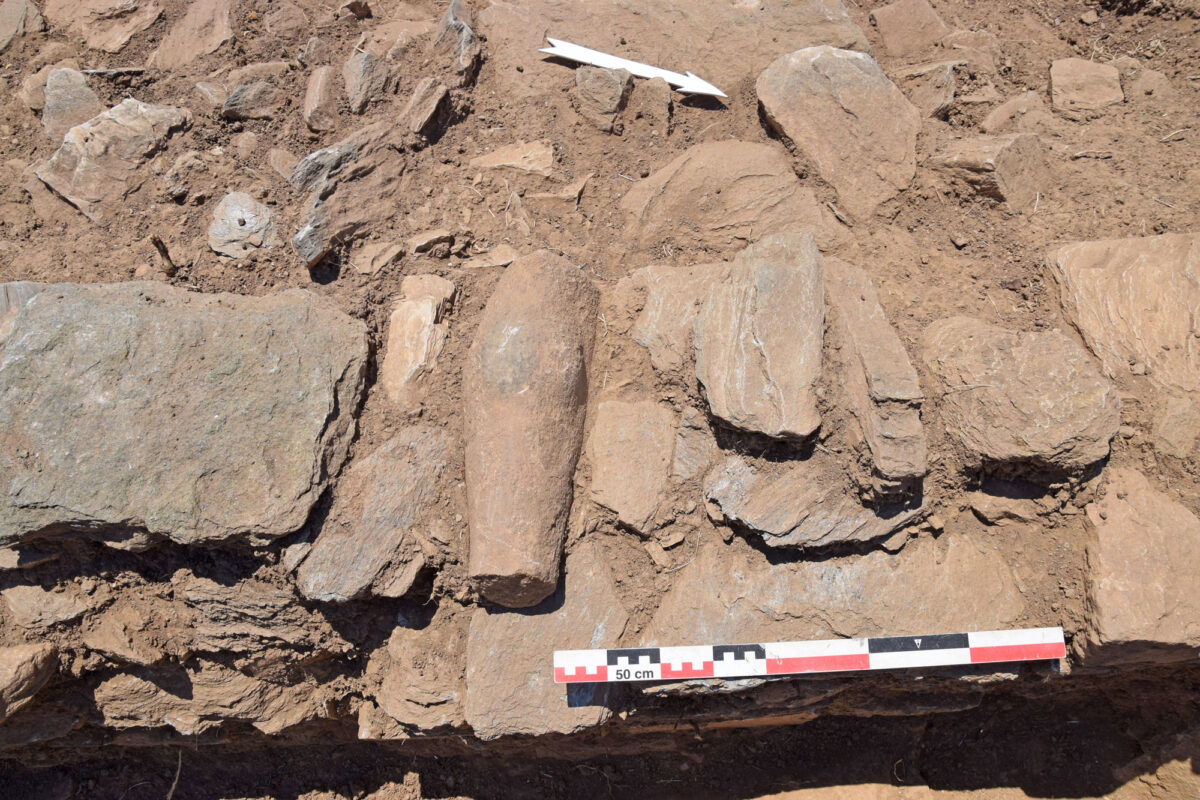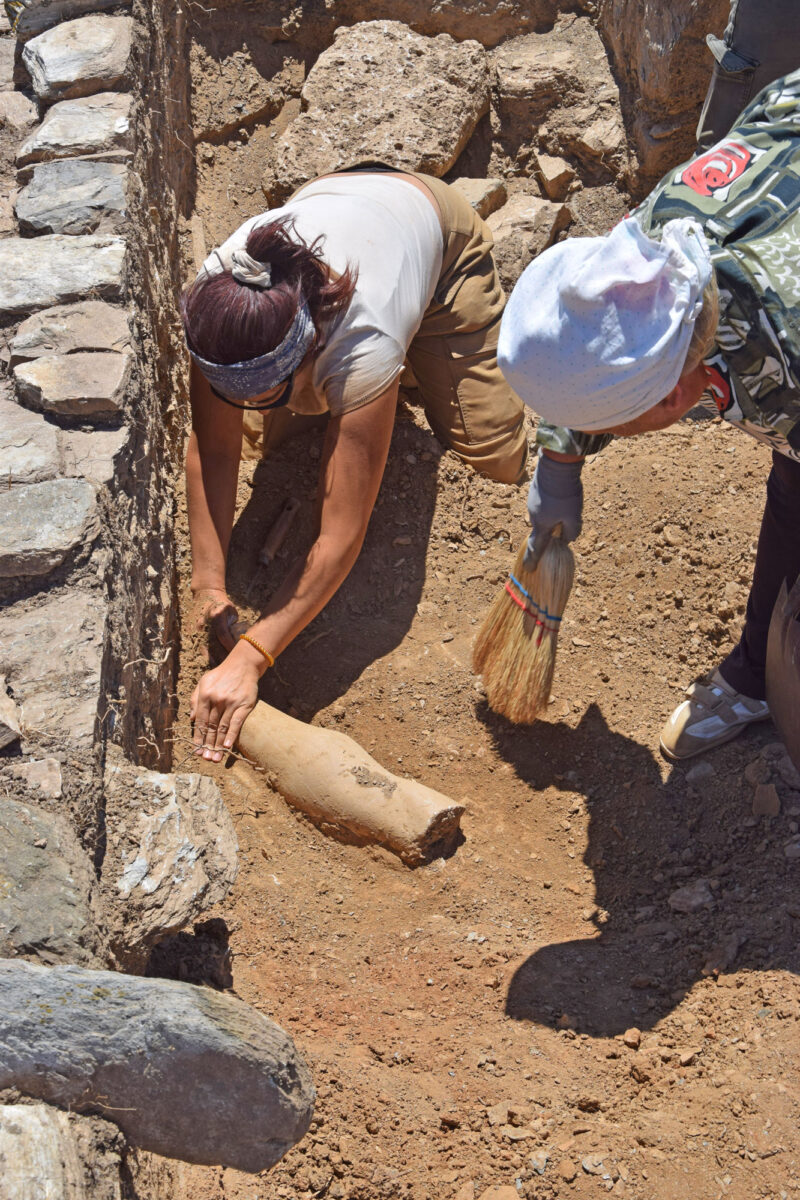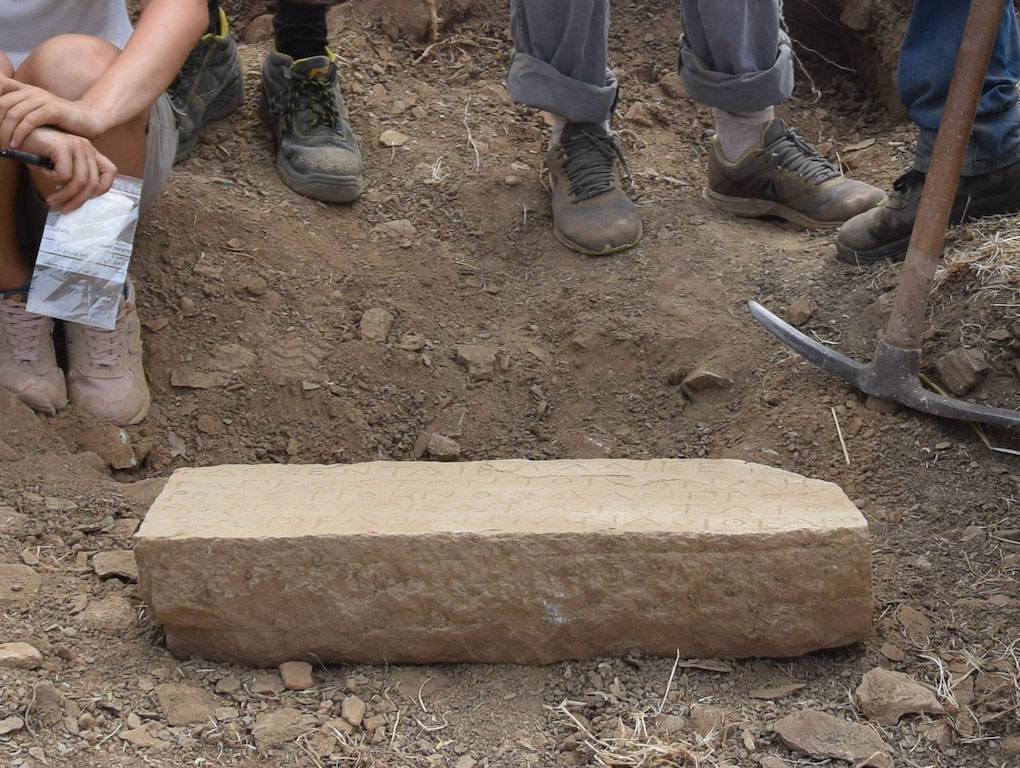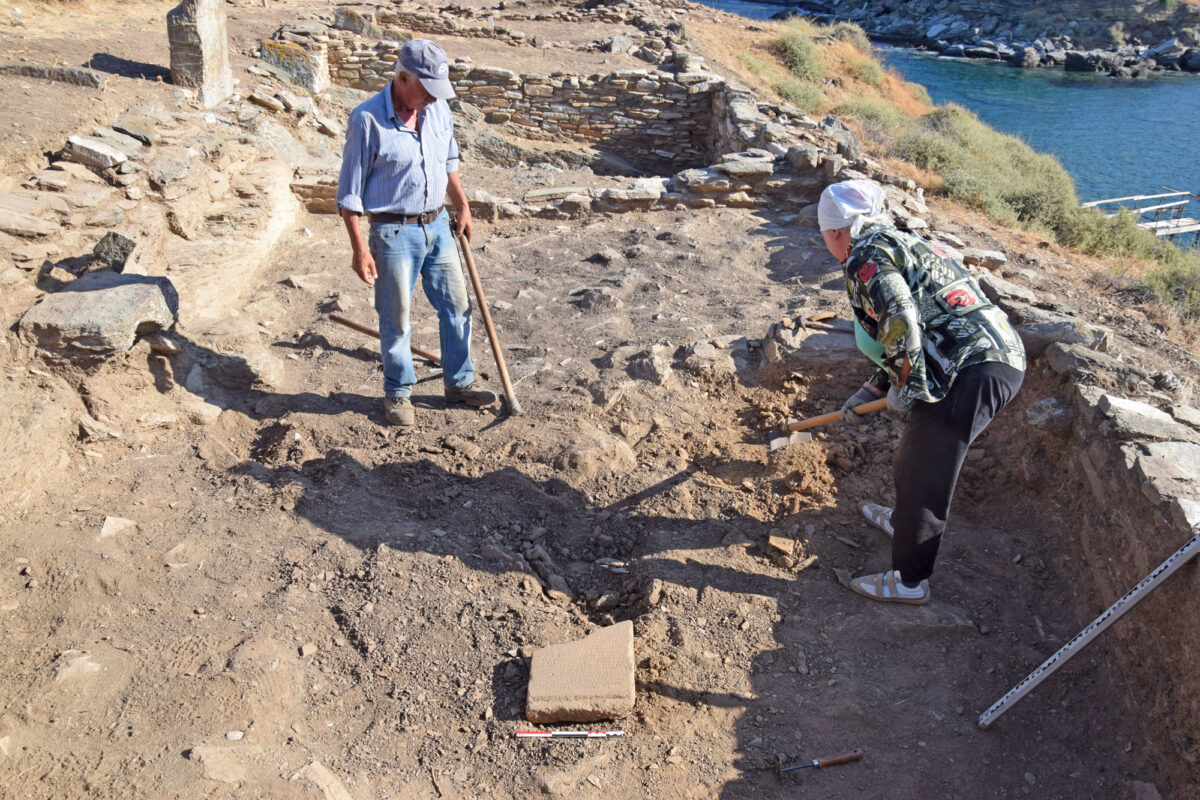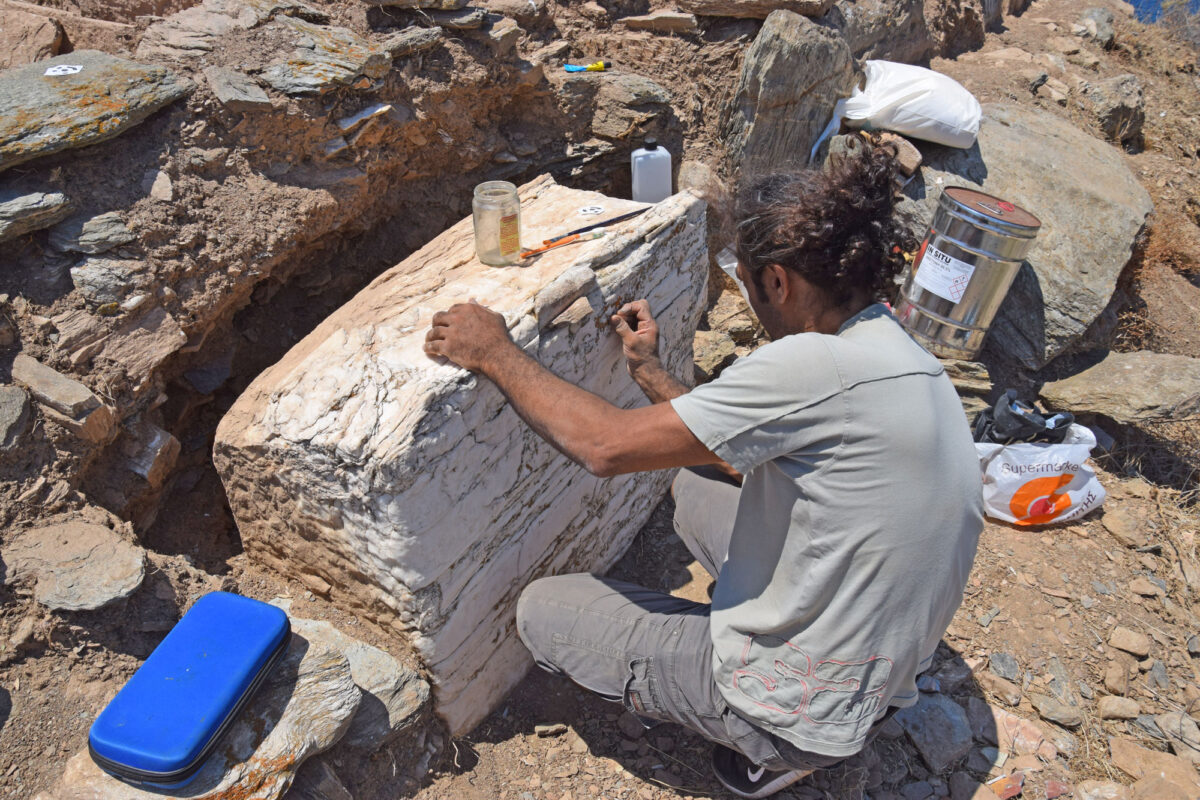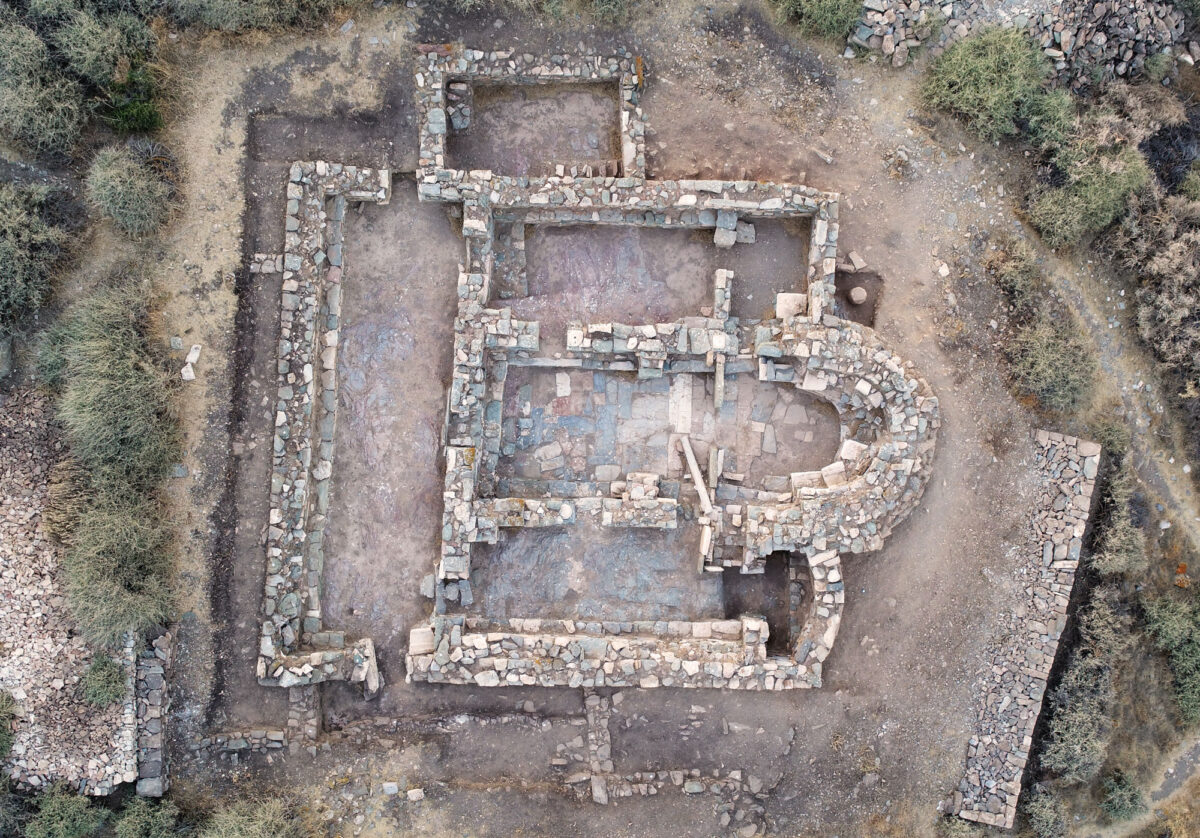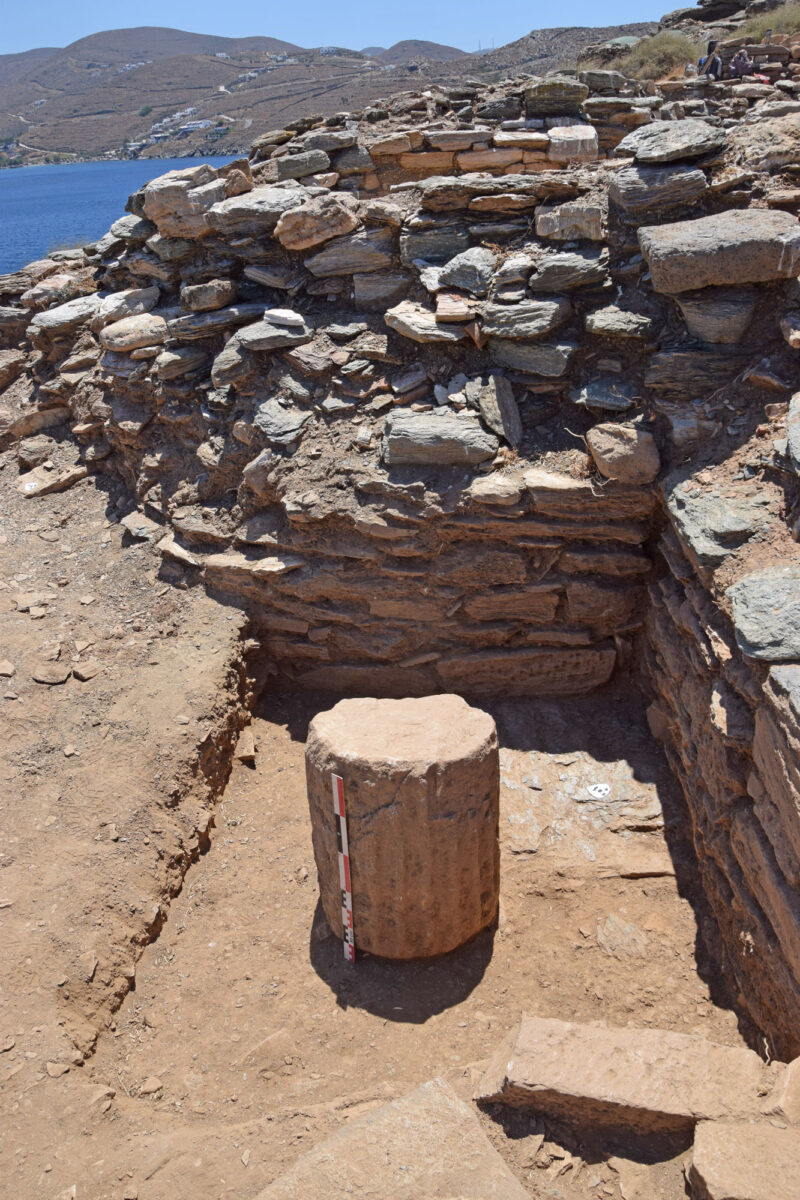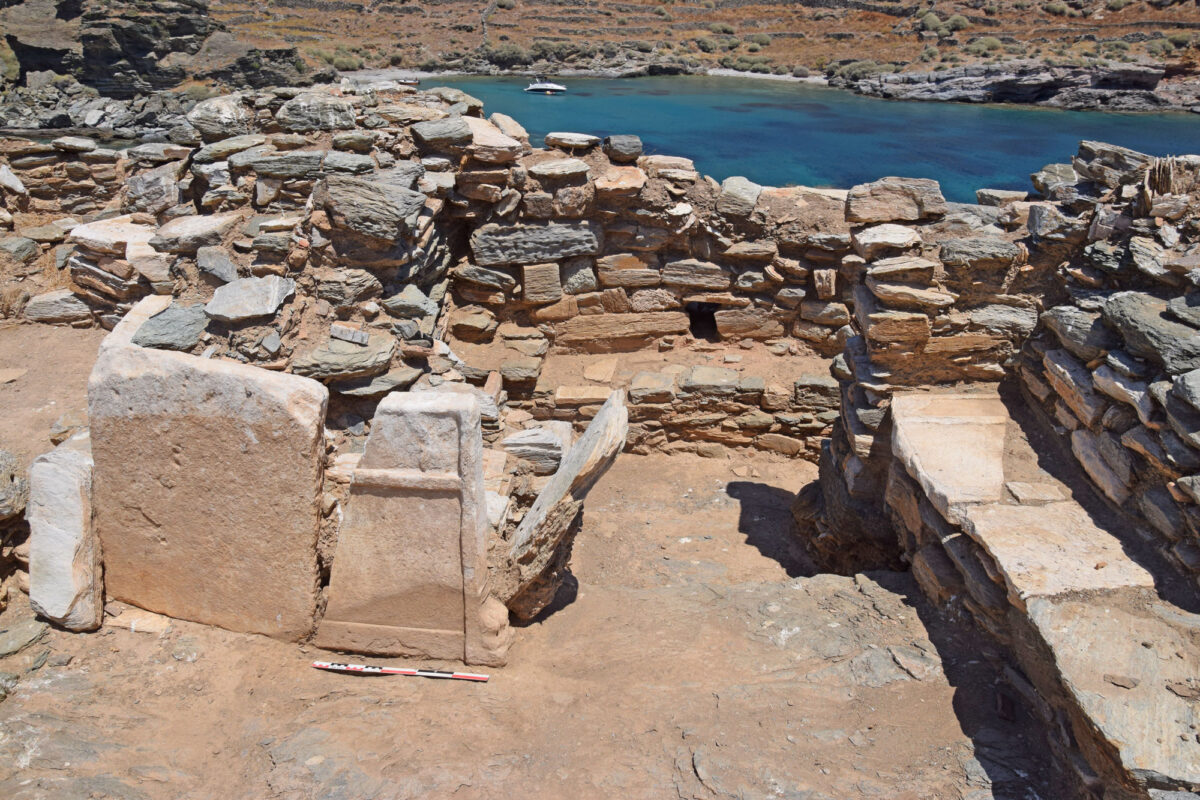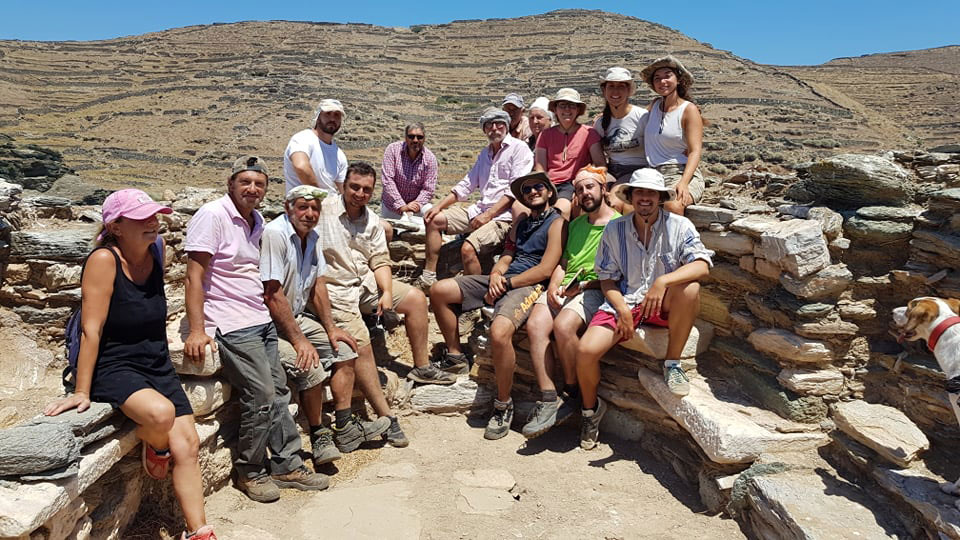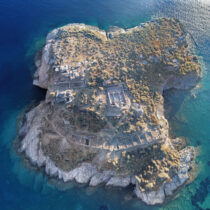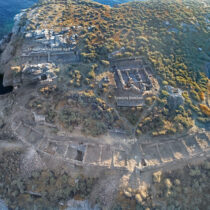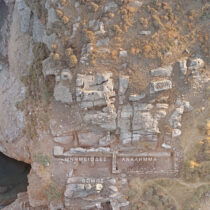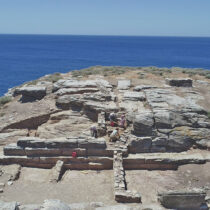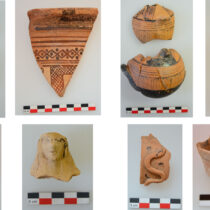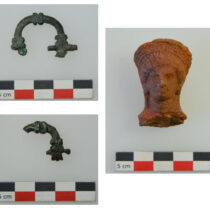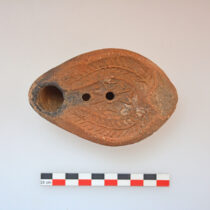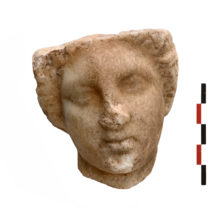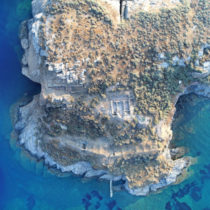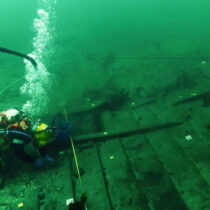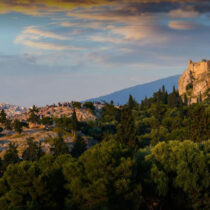From June 29 to July 31 this year excavations were again conducted on the rocky islet of “Vryokastraki”, opposite “Vryokastro” i.e. the ancient city of Kythnos. It was a collaborative excavation of the Department of Archaeology of the University of Thessaly’s Department of History, Archaeology and Social Anthropology with the Cyclades Antiquities Ephorate of the Ministry of Culture and Sports. Vryokastraki has been inhabited continuously from the 12th century BC to the 7th century AD, while there are now clear indications of the presence of a Cycladic settlement from the 3rd millennium BC (figs. 1-2). The works focused on the three areas investigated since 2018: the monumental sanctuary of Geometric-Classical times, the elongated Building 2 of Late Antiquity and the three-aisled early Byzantine basilica. The results were particularly significant this year as well.
The Ancient Sanctuary
Research in the ancient sanctuary (figs. 3-4) located in 2019, was limited to the excavation of undisturbed layers so as to date the construction of the monumental terrace and also to acquire a better understanding of the nature of the cult. Like last year, Geometric and Archaic ceramics of exceptional quality were collected (fig. 5). The shapes are mostly small and closed, such as hydriai, oinochoe and prochoi, while miniatures have also been found. The finds include a few, mainly female, clay figurines and some bronze votive offerings, such as miniature buckles and other jewelry (fig. 6).
These findings are probably related to some female deity. Moreover, one can conclude that the terrace was constructed in classical times so as to build a temple on it , of which only some carvings survive on the bedrock as an early Christian settlement developed in the region (an intact North African oil lamp of the second half of the 6th century, (fig. 7) belongs to the last phase of the site’s use). To the east there was a monumental altar carved in the natural rock, very eroded today.
Building Complex 2
In the second section, the extensive unearthing of the Early Byzantine building complex 2 was completed (fig. 3 in the foreground). It is made up of a fortified linear enclosure, with a total length of 76 meters. The wall, with an average width of 1.20-1.50 meters, blocks the only access to the islet facing the ancient port. On its inner side it contains 15 successive rectangular rooms (Β-ΙΣΤ), each with an entrance to the islet’s interior.
The initial phase of the fortification and the sites seems to date back to the Archaic period at least, but an in-depth research to clarify the phases of the building complex could not be carried out this year. Approximately in the middle of the length of the complex (Room H) an entrance gate was discovered, accessible through an outwork. Inside, next to the entrance, a small room was found with storage jar in situ and next to it a place for food preparation (fig. 8). Nearby, inside the walled area, a pear shaped tank / cistern was discovered, similar to those of Vryokastro, partially filled with rubble.
The strongly constructed northernmost room of the complex (Room B), built above the cliff (fig. 2 right), must have functioned primarily as a fortification. Found among the fallen stones of this room’s superstructure was an interesting honorary inscription concerning a Kleainetos from Aetolia and related to a well-known incident testified by inscriptions found earlier in Athens (IG II² 682 and 549), which mention the pirate Glauketis who had occupied Kythnos at the end of the 4th century BC (fig. 9). The inscription refers to Glauketis, commonly considered as a pirate by scholars, however based on this decree it turns out that he was a nesiarchos (ruler of the islands), a status that the Athenians seem to have hidden. On the wall adjoining room C, a calf from the marble statue of a man (fig. 10) was found embedded in the wall. A pair of similar calves of another marble male statue (fig. 11), as well as two inscribed stones (figs. 12, 13), were found in the ruins of another room (IG), apparently all of secondary use.
The inscriptions are very important. One, in Doric dialect (fig. 12), is a resolution passed by the Municipality of Kythnia on some building restrictions as well as the fine to be collected by the theoroi (ambassadors) in case of illegal conduct. The other lengthy inscription refers to the important honors bestowed by the Municipality and the Boule of the people of Kythnos on a person whose name unfortunately has not survived (fig. 13). It is interesting that in a secondary use of the fortification of the Early Byzantine complex (standing as high as Room D), a statue’s marble pedestal was unearthed which retains niches in a circular arrangement on its front side, apparently for attaching two wreaths (fig. 14).
Three-aisled basilica
Lastly, the excavation outside and around the three-aisled Early Byzantine basilica aimed at further enhancing the monument, as well as investigating the presence of any additional buildings (fig. 15). The limits of the church’s arch were marked out and externally, at the meeting point of the northern aisle with the arch of the inner sanctuary, an upright marble Ionic column drum was discovered (fig. 16). A wall tangent at right angles to the west side of the narthex was also found. More walls appeared on the south side of the church: a narrow passage runs parallel to its south wall and leads to the south entrance of the narthex, but also to a small horseshoe-shaped area directly to the west. Walls appeared still further west outside the southwest corner of the narthex. Marble members had been used as spolia in the building. For security reasons, some of them, such as the fragments of a table support ending in leopard feet (fig. 17), were detached from the wall and taken to the Archaeological Collection of the Chora.
The excavation programme is conducted by Professor of Classical Archaeology Alexandros Mazarakis Ainian and Ephor of Antiquities of the Cyclades Dr. Demetris Athanasoulis. Due to circumstances, a small number of postgraduate students and graduates of archaeology from the Universities of Thessaly, Athens, Thessaloniki, Ioannina and Paris 4 participated in the excavation (fig. 18). This year the research was financially supported by the University of Thessaly, the Secretary General of the Aegean and Island Policy and mainly by the generous sponsor Thanasis Martinos. Likewise, the Municipality of Kythnos granted the use of Chora’s Primary School for the programme’s needs. The Captain of the “Marmari Express” provided free ferry tickets to the members of the research team.
